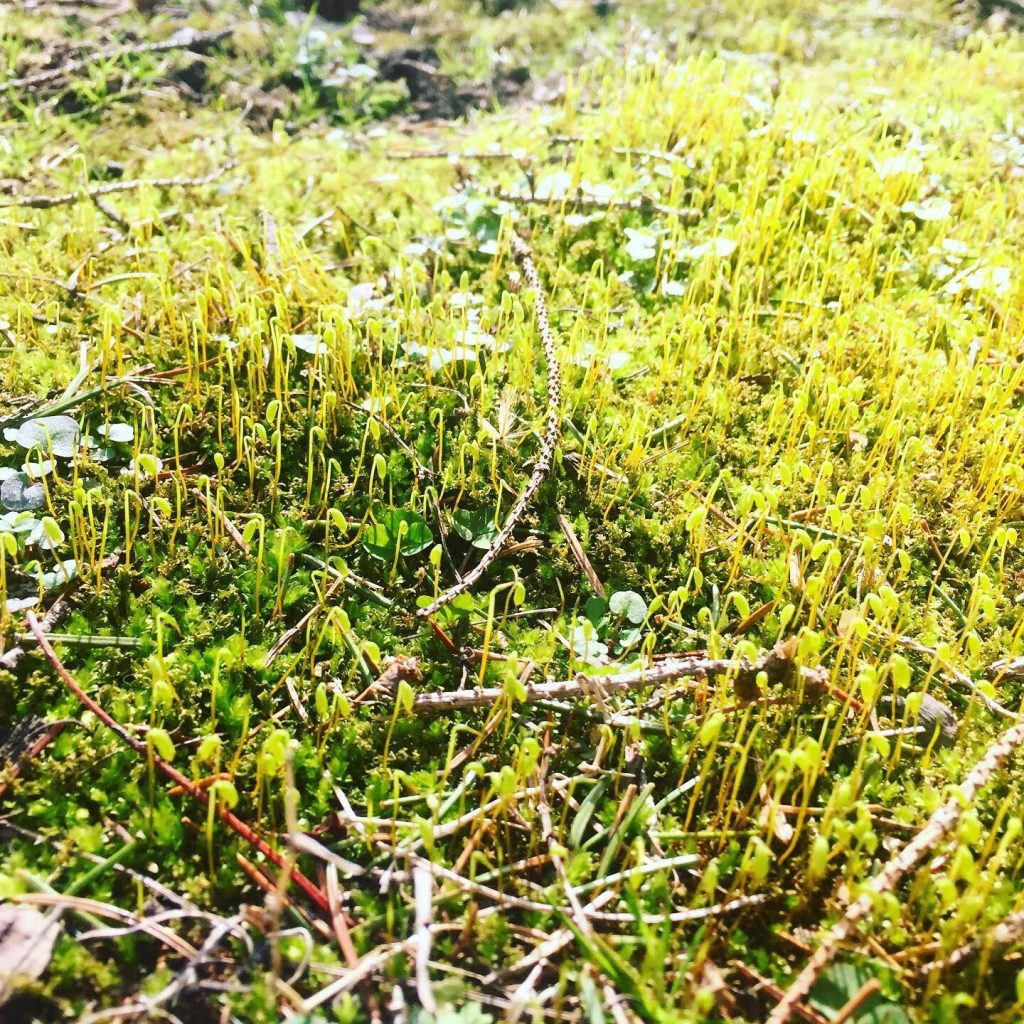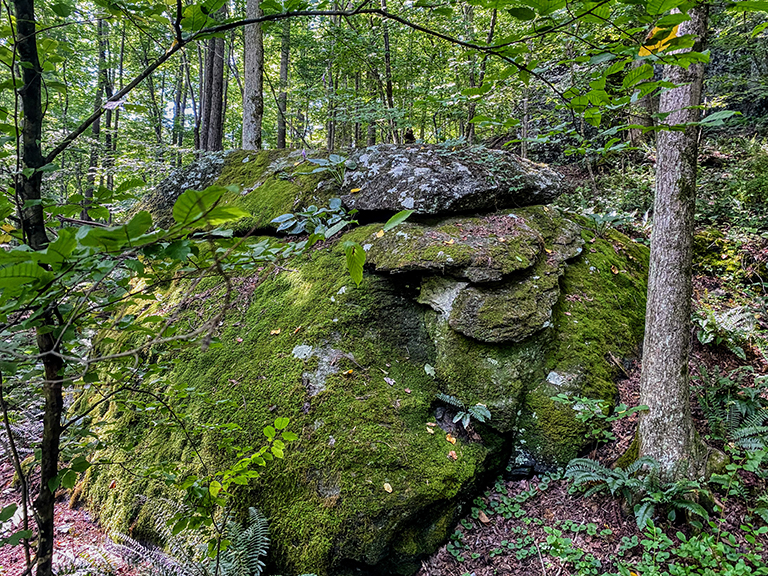
Moss is one of my favorite signs of spring- its some of the first real green we see. It’s always there, it doesn’t die back like herbaceous plants, but warmer temperatures and spring rains seem to make it come to life in the spring. Moss is a fascinating ancient organism. It belongs to a group of plants called bryophytes, which are non-vascular and flowerless. Non-vascular means that they lack the channels that other plants have to transport water and nutrients to various parts of the plants. They are small and form dense clumps or mats, often in damp or shady places. The leaves are only one cell thick. The first plant on earth, moss began to grow on land 470 million years ago. It absorbs carbon dioxide from the air and absorbs minerals from the rocks it grows on by secreting acids that caused them to slowly break down. Moss softens and muffles. Moss that grows under trees is very particular, often requiring a specific species of tree to thrive. Moss collectively provides more carbon offset than all the trees in the world.
One of my favorite moss projects is a simple little table top moss garden. The one in the top picture is at least 15 years old. It lives outside and requires zero maintenance. It’s just some sticks and soil with patches of moss laid on top. I add to it now and then when I find a nice piece of moss with an interesting texture. One of the fascinating things about moss is that it can dry out completely and look dead, but it will spring back to life with a little water. This makes it an easy to care for garden.


In the image on the right, my kids use a hollowed out log as a container for their moss garden which is decorated with rocks and clay beads. They also love to use moss in their fairy house villages and creative play. Their stuffies have a selection of moss beds. Another fun way for kids to interact with moss is through the use of a jeweler’s loupe, basically a magnifying glass that lets them examine the surface more carefully. Older kids can also try a higher powered microscope and might be rewarded with tardigrades, they often live in moss and one of their nicknames is “moss piglets!”
It’s important to only ever use displaced moss- don’t rip it out of its colonies. It’s slow growing and very particular about where it grows. So it’s fine to collect moss that has already been knocked out of its growing place, but you shouldn’t be snatching it away from healthy colonies. That said, moss that is growing places where it will be removed like potted plants, gutters or other inopportune places is fair game. I have had great success transplanting both potted plant and gutter moss.
A great source of artist inspiration for this project is the Saiho-ji moss garden in Kyoto Japan. One of the most ancient gardens in the world, this 1300 year old temple and garden is entirely covered in 120 different types of moss. Tended to by monks, visitors to the garden must participate in a ritual before they are able to view the garden. In Japan, moss is a symbol of harmony and tradition. It is present in elaborate gardens of Saiho-ji, but also common in modest suburban gardens and urban spaces. The monks view contemplation of landscape as a route to enlightenment. When I am in a mossy forest I can understand that point of view.

Tabletop Moss Garden
This is a simple project that almost doesn’t need directions. Because the finished product is portable you can bring it indoors for some spring greenery in March and April or leave it to fend for itself outside all year which it will do admirably. I rarely water mine and it has been thriving for years.
Materials:
- displaced moss
- soil
- sticks or mulch
- a flatish container (I have used a stone dish, a hollowed out log and plant saucers)
Method:
Place a thin layer of sticks or other organic matter in your dish and pile the soil on top. The sticks just add some organic matter for the moss and can be skipped if you use a log. If you are able to use soil from the place you gathered the moss (i.e. if it came from a potted plant) otherwise don’t worry about it too much.
Layer you moss on top and press down gently so that it makes contact with the soil. I like to add patches of different colors, textures and types of moss.
Sit back and watch your moss do its thing! I have continued adding to mine over the years anytime I find an interesting piece of moss.


[…] Moss Gardening […]